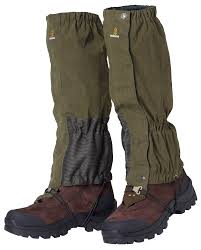gaiter
英 [ˈgeɪtə(r)]
美 ['ɡeɪtər]
- n. 绑腿;长统橡胶靴

中文词源
gaiter 绑腿
来自法语,原指膝盖或脚踝,词源不详。可能来自PIE*wer, 弯,转,词源versus, wrist. 字母g, w音变,字母r脱落。
英语词源
- gaiter
-
gaiter: [18] Etymologically as well as semantically, gaiter is an ‘ankle covering’. It comes from French guêtre ‘gaiter’, which may well have been formed from Germanic *wirst-. This denoted ‘twist, turn’, and it has several modern derivatives which mean essentially ‘twisting joint’: German rist, for example, which has now migrated anatomically to the ‘instep’ and the ‘back of the hand’, originally signified ‘ankle, wrist’, and although English wrist now refers only to the hand/arm joint, it was formerly used dialectally for the ‘ankle’.
=> wrist - gaiter (n.)
- "leather cover for the ankle," 1775, from French guêtre "belonging to peasant attire," of unknown origin; perhaps from Middle French *guestre, from Frankish *wrist "instep," from Proto-Germanic *wirstiz (source also of German Rist "instep;" see wrist (n.)). Related: Gaiters; gaitered (1760).